From UC IPM Pests in the Urban Landscape blog.
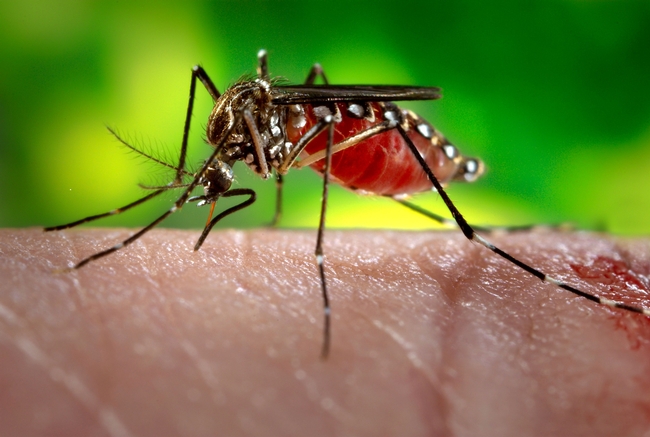
According to Gary Goodman, District Manager of Sacramento Yolo Mosquito and Vector control, many residents are anxious and excited to get outside and enjoy the warm weather so it's important to protect yourself from mosquito bites by wearing a good mosquito repellent.
The Centers for Disease Control and Prevention (CDC) recommend using an insect repellent that contains the active ingredients DEET, Picaridin, IR3535 or the plant-based oil of lemon eucalyptus.
Aside from personal protection against mosquito bites, it's important to ensure mosquitoes are not breeding at home. Drain stagnant water from sprinklers, irrigation, and rainstorms. Be sure to check your backyard and dump any water in flower pots, kiddie pools, tires, pet dishes, bird baths and other common household containers that can hold water.
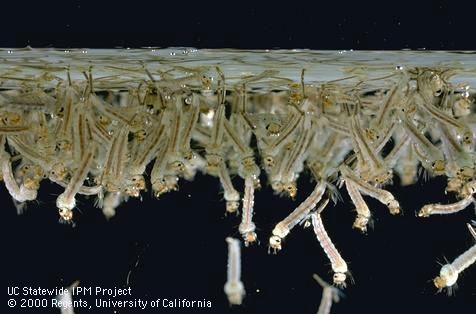
Another ongoing concern is the invasive mosquito Aedes aegypti which has been detected in several counties throughout Southern California and the Central Valley. For county level information, see this map. Invasive mosquitoes pose a significant health threat because they can transmit dangerous viruses including Zika, dengue fever and chikungunya. Surveillance efforts have continued since the initial detection last August. To date, no cases of Zika virus have been reported in California.
For more information on mosquito identification and management, see our recently revised Pest Notes: Mosquitoes. Additional information on vector-borne diseases is available on the California Department of Public Health website.
- Author: Anne E Schellman
In Part I, we discussed why mosquitoes bite, and which mosquito species can spread West Nile and Zika virus. Now, let's talk about what mosquitoes need to reproduce, how to prevent them from breeding around your home, and best methods to protect yourself and your family while outdoors.
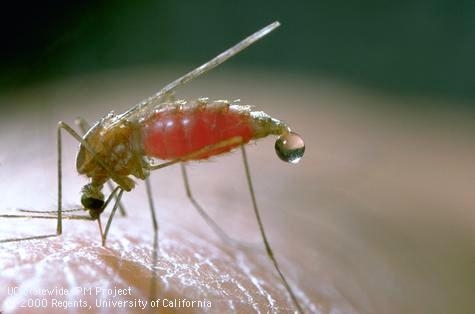
What do Mosquitoes Need to Breed?
The mosquitoes that spread West Nile virus and Zika need water to lay their eggs. Female mosquitoes can lay their eggs in even the smallest amount of water. Places in your yard that appeal to them include standing water found in ponds, garden pots, children's toys, or even pet water bowls. Eliminating these possible breeding spaces is key to mosquito control.
Watch the video “Don't Let Mosquitoes Breed in your Yard” from UC IPM for helpful tips.
Protect Yourself from Mosquito Bites
There's a plethora of mosquito control and prevention items for sale, but many are ineffective.
When outdoors, protect your skin by wearing long-sleeved pants and shirts, long socks, and a hat. Be aware that mosquitoes can bite through a thin layer of clothing. Also, choose and apply an effective EPA-registered mosquito repellent that contains DEET, picardin, IR3535, or oil of lemon eucalyptus to exposed skin.
You may be tempted to use outdoor sprays to battle mosquitoes. However, this method is only temporary and doesn't help control the source of the problem. The best way to avoid bites are prevention and protection.
Resources: UC IPM Pests in the Urban Landscape. Zika, Mosquitoes, and Repellents. https://ucanr.edu/blogs/blogcore/postdetail.cfm?postnum=21923
- Author: Anne E Schellman
You've probably read a lot lately in the news about West Nile virus and Zika virus. In mid-June, the first human case of West Nile virus in Stanislaus County was diagnosed. This past week, mosquitoes that can carry the Zika virus were found in our county.
Why do mosquitoes bite?
It may surprise you to learn that mosquitoes get most of their food from flower nectar. However, female mosquitoes need a blood meal to produce eggs. If she bites someone while carrying a virus, it can infect that person.
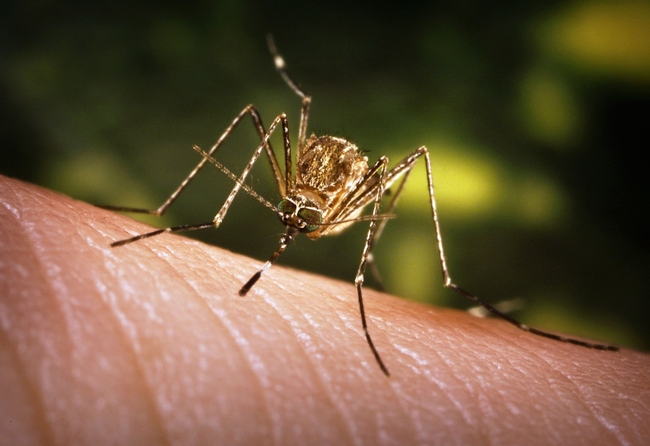
What is the difference between West Nile virus and Zika virus?
West Nile virus is carried by Culex tarsalis or the Western encephalitis mosquito. This species is most active just after sunset. It feeds on birds and other mammals, including humans.
Eighty percent of people infected with West Nile virus do not show symptoms. The other twenty percent may have mild symptoms including fever, headache, body aches, nausea, vomiting, and sometimes swollen lymph glands or a skin rash. One in 150 people infected will develop a neurological illness that may result in death.
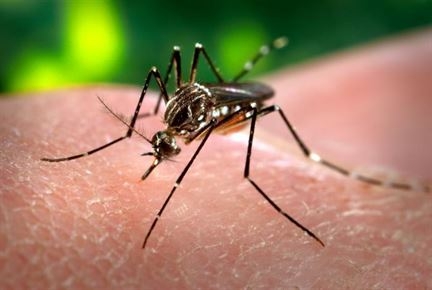
Zika virus is transmitted by several species of Aedes mosquitoes. These mosquitoes bite people during the day. Women infected with Zika during pregnancy may have an infant born with microcephaly and other severe brain defects.
Although this mosquito has been found in Stanislaus County, the virus has not been found in California. Aedes mosquitoes can only transmit Zika if they carry the virus.
How can I protect myself and my family?
Stay tuned tomorrow for part II of this blog post, with helpful tips for prevention and protection from mosquitoes.
Resources:
University of California Agriculture and Natural Resources. UC IPM Pest Notes: Mosquitoes. Taken from http://ipm.ucanr.edu/PMG/PESTNOTES/pn7451.html on August 5, 2019.
Vector Disease Control International. Culex tarsalis-the Western Encephalitis mosquito. Taken from http://www.vdci.net/blog/mosquito-of-the-month-culex-tarsalis-western-encephalitis-mosquito on August 5, 2019.
California Department of Public Health. Zika: What Californians Need to Know. Taken from https://www.cdph.ca.gov/Programs/CID/DCDC/Pages/Zika.aspx on August 5, 2019.

